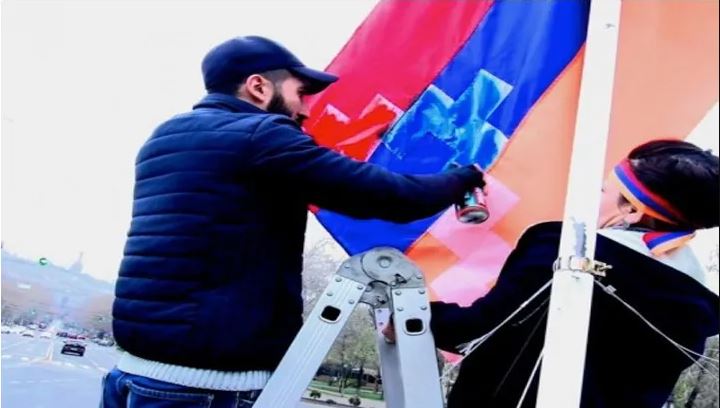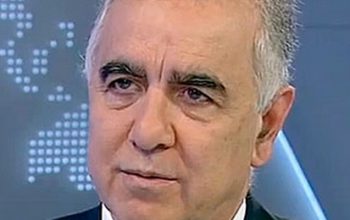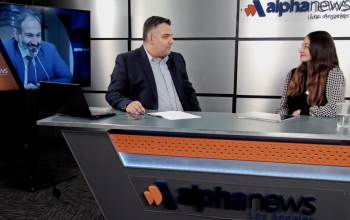By Gor Mkrtchian – Armenian Weekly
Most Armenians understand the plain truth that the people of Yerevan are Armenians, the people of Syunik are Armenians, the people of Lori are Armenians and the people of Artsakh are…Armenians.
Even before the 44-day war, it didn’t take a geopolitical expert to realize that losing the Republic of Artsakh would endanger the Republic of Armenia. Monte Melkonian stated it clearly, “If we lose Karabakh, we will turn the final page of Armenian history.”
Shortly after the war, we learned the hard way how accurate this prediction was, with the Azerbaijani military using occupied Karvachar as a staging ground to invade and occupy Gegharkunik, and using occupied Kashatagh to invade Syunik, not to mention the post-war incursions deeper into Artsakh, such as in Parukh.
However, it has recently become increasingly clear that there is a segment of the Armenian population that not only sees the people of Artsakh as less Armenian than the people of Syunik, or Tavush or Yerevan, but that even hates the people of Artsakh.
There have been several notable manifestations of this hatred, not only among fringes of Armenian society, but even among those in places of political power.
Nikol Pashinyan and the “Karabakhtsi Scum”
Serzh Sargsyan, who was born and raised in Stepanakert, Artsakh, won the 2008 Armenian presidential election. During the deadly riots against the results of this election, Nikol Pashinyan shouted to the violent mob, “Today, we must liberate our city from the Karabakhtsi scum.”
Why did Pashinyan use the language “Karabakhtsi scum” to refer to political figures from Nagorno Karabakh/Artsakh?
If you have a problem with someone’s policies and actions in office, that is what you ought to criticize, not the place they were born.
In this case, Pashinyan’s act of highlighting that his political opponents are from Karabakh clearly appears to be a deliberate attempt to stoke division and tribal animus for political gain.
And after becoming Prime Minister, Pashinyan didn’t just get the “Karabakhtsi scum” out of Yerevan. He also made it so that there are now no Karabakhtsis left in Shushi, Hadrut, Varanda, Karvachar, etc. Is Stepanakert next?
National Democratic Pole vandalizes the Artsakh flag
On April 5, Armenia’s opposition rallied against further territorial concessions by Armenia’s government to Azerbaijan. As part of this rally, the opposition planted the flag of Artsakh in cities across Armenia.
According to 5 TV Channel, sympathizers of the political party National Democratic Pole (also known as Sasna Tsrer) allegedly vandalized one of these flags. They allegedly painted over the Artsakh flag to make it look like the Armenian flag, with the presumed motivation of symbolically uniting Armenia and Artsakh.
The opposition was rallying in favor of Artsakh’s independence and raising the flag that the Republic of Artsakh itself uses to represent itself. In light of these facts, spray-painting over an Artsakh flag that was not their property was a strange way for National Democratic Pole sympathizers to make a symbolic statement about the unity of Armenia and Artsakh.
Rather, this claim of symbolism is likely a thin veneer to justify disrupting and harassing the opposition protest.
National Democratic Pole was the armed group responsible for the deadly 2016 standoff with police in Yerevan, holding hostage medical personnel and police officers. Three were killed.
Civil Contract MP Gagik (Gurgen) Melkonyan
In another example of anti-Artsakh sentiment, Gurgen Melkonyan, a member of the Civil Contract parliamentary faction, stated in an interview released on April 11 that Armenia has been conquered by Artsakh since 1998, when Robert Kocharyan (who is from Artsakh) became President of Armenia.
Would Melkonyan say that Ijevan (the birthplace of Pashinyan) “conquered” Armenia when Pashinyan became Prime Minister? Melkonyan’s implication is clearly that he considers Artsakh and its people something foreign to Armenia, rather than an essential part of it.
If this were a fringe viewpoint within the governing Civil Contract faction, one would have hoped that other members would have denounced Melkonyan’s comments. But this doesn’t appear to be the case at the time of this writing.
It’s totally unacceptable that the ruling faction currently negotiating the fate of Artsakh with Azerbaijan tolerates these views, let alone publicly voices them.
This mind virus is not only contemptible, but it also doesn’t make sense from the point of view of self-interest. Artsakh acted as a shield that put dozens of kilometers between Azerbaijan and the southern portions of the Republic of Armenia.
Now that the Azerbaijani military has conquered the Karvachar and Kashatagh regions of Artsakh, they have used those areas as staging grounds for incursions into the Geghargunik and Syunik provinces of the Republic of Armenia.
Little by little, we will lose what little is left of our homeland, until 1915 is repeated in the streets of Yerevan, unless we get our act together.
What is to be done?
What are Armenians of goodwill and clear minds to do in the face of this evil and foolishness? We have to understand that Armenians are Armenians, regardless which part of historic Armenia our ancestors come from. We have to understand that Artsakh is a guardian and a blessing to the rest of Armenia, not a burden.
Hatred of Artsakh and its people should be stigmatized and shown the disgust it deserves. That attitude is morally repellent and poses a danger to the survival of our people.
While I hope I’ve helped draw attention to this problem, the next step is to further trace its origins. Ideologies, especially ones that are this bizarre, don’t sprout up ex nihilo. They’re planted by particular people with particular interests.
Which political parties, NGOs, media outlets and foreign governments are promoting division among the Armenian nation? Let’s trace the problem to its roots and stop it at the source.



